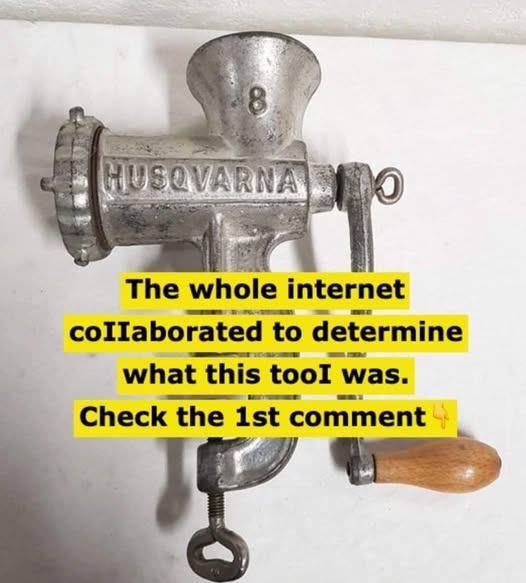ADVERTISEMENT
#### **The First Manual Mixers**
Before the electric mixer, people relied on manual tools to mix, stir, and beat ingredients. Early manual mixers included devices like the egg beater, which was a hand-cranked contraption with rotating beaters. These devices were able to whisk eggs, cream, and other liquids, but they still required considerable elbow grease.
The first significant leap toward mechanized mixing came with the introduction of the “mixer” concept in the late 1800s. However, the concept of a powered mixer didn’t materialize until the early 20th century when engineers and inventors began looking for ways to speed up and simplify mixing tasks.
—
### **2. The First Electric Mixers: Revolutionizing the Kitchen**
In 1908, a young inventor named Herbert Johnson from the Hobart Manufacturing Company developed the first electric stand mixer. This machine, originally known as the “Hobart Kitchen Aid,” is considered the precursor to the modern stand mixer. The electric mixer was initially designed for professional kitchens and bakeries, where large quantities of food needed to be mixed efficiently.
#### **Hobart and the Birth of the KitchenAid**
Hobart’s initial electric mixer, which was released in 1919, was aimed at industrial kitchens. However, it was clear that home cooks could benefit from such a device as well. In 1922, the company redesigned the mixer and marketed it for home use. This version of the mixer was branded “KitchenAid,” and it became immensely popular with homemakers.
The KitchenAid mixer featured a powerful electric motor that could effortlessly mix large quantities of dough and batter. The design was sleek, with a metal body and a sturdy stand, making it both functional and aesthetically pleasing. The mixer was also equipped with various attachments, including beaters, dough hooks, and whisks, allowing it to handle a range of mixing tasks.
One of the most significant innovations of the KitchenAid mixer was the planetary mixing action, which allowed the beaters to rotate around the bowl while also spinning on their own axis. This ensured that ingredients were evenly mixed, a feature that set it apart from other mixers of the time.
KitchenAid’s success in the 1920s and 1930s made it a household name, and the mixer became a staple in kitchens across the United States. The brand’s commitment to quality and innovation helped it expand into other kitchen appliances, further solidifying its place in American homes.
—
### **3. The Rise of the Hand Mixer: Convenience and Portability**
While stand mixers were gaining popularity in both professional and home kitchens, another type of mixer was being developed to serve a different purpose: the hand mixer.
Hand mixers were introduced in the 1950s and were designed to be more portable and affordable than their stand mixer counterparts. These handheld devices were ideal for quick jobs and smaller quantities, making them an attractive option for people with limited kitchen space or those who didn’t need a heavy-duty appliance.
The hand mixer was first popularized by brands like Sunbeam and Hamilton Beach. Sunbeam’s Mixmaster, introduced in 1954, became one of the most iconic hand mixers in history. It featured a lightweight design, multiple speed settings, and detachable beaters, which made it easy to store and clean. The Mixmaster’s portability made it a great choice for home bakers, and its success helped solidify the hand mixer as an essential tool in kitchens across America.
By the 1970s and 1980s, the hand mixer became a household staple, and many models included additional attachments such as dough hooks and beaters for specific tasks. The hand mixer offered a more affordable and versatile alternative to the heavy-duty stand mixers, making it accessible to a wider range of cooks.
—
### **4. The Shift to More Specialized Mixers**
As kitchens became more sophisticated and home cooking became more varied, mixers began to evolve to meet the needs of different cooking and baking tasks. By the late 20th century, manufacturers were creating more specialized mixers designed for specific tasks.
#### **Bread Mixers and Dough Mixers**
In the 1980s and 1990s, the popularity of homemade bread surged. As a result, kitchen appliance manufacturers began designing mixers specifically for kneading bread dough. These mixers featured specialized dough hooks and motors powerful enough to handle the dense, heavy dough needed for bread-making. Many of these mixers were still stand mixers, but they came with specific attachments and settings designed to optimize the bread-making process.
Mixers designed for bread-making took the stress out of kneading, which was traditionally a very labor-intensive task. Today, these specialized mixers are a must-have for bakers who want to create homemade loaves of bread, pizza dough, and other baked goods that require intense kneading.
For Complete Cooking STEPS Please Head On Over To Next Page Or Open button (>) and don’t forget to SHARE with your Facebook friends
